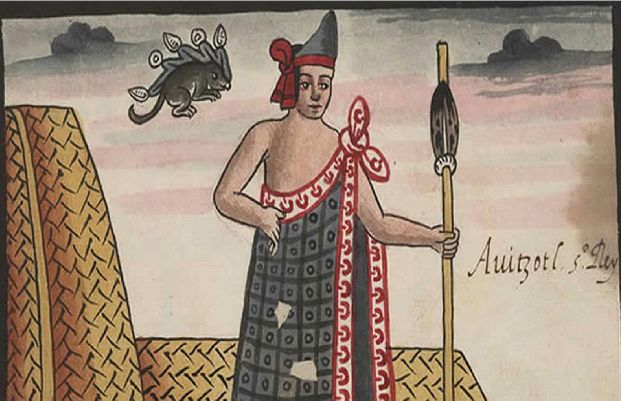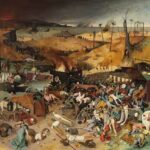Ahuitzotl was a tlatoani (meaning ‘speaker’) of the city of Tenochtitlan, and the eighth ruler of the Aztec Empire. This emperor reigned from 1486 AD to 1502 AD, a period which is regarded by some modern historians as the Aztec Golden Age.
It was during Ahuitzotl’s reign that the Aztecs Empire was expanded to its greatest territorial extent and consolidated. In addition, huge building projects were undertaken. This Golden Age, however, did not last for very long, and ended following Ahuitzotl’s death. The emperor was succeeded by his nephew, Moctezuma II, who is perhaps best remembered as the last independent Aztec ruler before the empire’s conquest by the Spanish.
The name Ahuitzotl (meaning ‘spiny aquatic thing’) is associated with a mythical creature that lived at the bottom of a lake, and preyed on those unfortunate enough to come to the bank of its dwelling place. It is not entirely clear as to when Ahuitzotl was born, but he is recorded as being the grandson of Itzcóatl, the fourth tlatoani of Tenochtitlan, and the founder of the Triple Alliance (Tenochtitlán, Texcoco, and Tlacopan), which is the foundation of the Aztec Empire.
Ahuitzotl is recorded as having two brothers, both of whom were rulers before him. Axayacatl was the sixth ruler of the Aztecs, whilst Tizoc was the seventh. The former was a successful ruler who was victorious in war, and undertook many building projects. Tizoc, by contrast, was a failure, whose death after a short reign of five years was followed by Ahuitzotl’s ascension to the Aztec throne. It has been suspected that Tizoc was poisoned.
As Ahuitzotl was a mere youth when he was elected as emperor, there was some opposition to his election. He soon proved his worth, however, as he was an aggressive war leader. His first military campaign was against former vassals located to the northwest of the Aztec lands. He returned to his capital victorious. Other campaigns followed, and Ahuitzotl managed to extend the territorial control of the Aztec Empire as far south as present day Guatemala and in the territory along the Gulf of Mexico.
These new conquests resulted in the pouring in of tribute to the Aztec Empire from all the defeated peoples. In other words, the Empire grew to be immensely wealthy. In addition, the campaigns also enabled the Aztecs to capture a huge number of prisoners of war. These captives were brought back to the capital to be used as human sacrifice in the various Aztec religious ceremonies aimed at appeasing the gods, as well as to celebrate the military victories. A Spanish chronicler, Fray Diego Durán wrote famously that as many as 80400 prisoners of war were sacrificed over a period of four days on top of the Templo Mayor in Tenochtitlán. Some modern scholars, however, argue that this number is an exaggeration.
Apart from his military campaigns, Ahuitzotl is also remembered for his grand building projects. One of the most significant of these was the expansion of the Templo Mayor, which was completed in 1487 AD. Human sacrifices were performed during the inauguration of this new temple to the rain god Tlaloc and the war god Huitzilopochtli, and the number of victims was given by Durán’s, 80.400, as mentioned earlier.
Another notable project was the building of a canal to bring water to the capital from Coyoacan. According to Durán’s account, the project started off badly, as too much water was brought in, and the city was flooded. Additionally, Ahuitzotl’s priests blame this disaster on the emperor’s killing of a ruler of Coyoacan, and that the flood was a punishment sent by Chalchiuhlicue, the water goddess.
Ahuitzotl died in 1502 AD, and there are several versions of the way he died. One of these, for instance, is that his sandal slipped on a wet rock whilst his garden was flooded due to a broken dike. The emperor hit his head on a stone lintel, and, as a result, died of a subdural hematoma. Another version suggests that he contracted some fatal disease, which raises the suspicion of poisoning.
In 2007, it was reported that ground penetrating radar had revealed that there may be a tomb hidden under the Templo Mayor. It was the discovery of a stone monolith during the previous year that sparked the survey. This stone monolith had the image of a goddess holding a rabbit with 10 dots in her right foot, interpreted as 10 Rabbit, the year of Ahuitzotl’s death. It has been pointed out that if the tomb does indeed belong to Ahuitzotl, it would be the first royal Aztec tomb to be discovered. No further reports about this discovery seem to be available.








